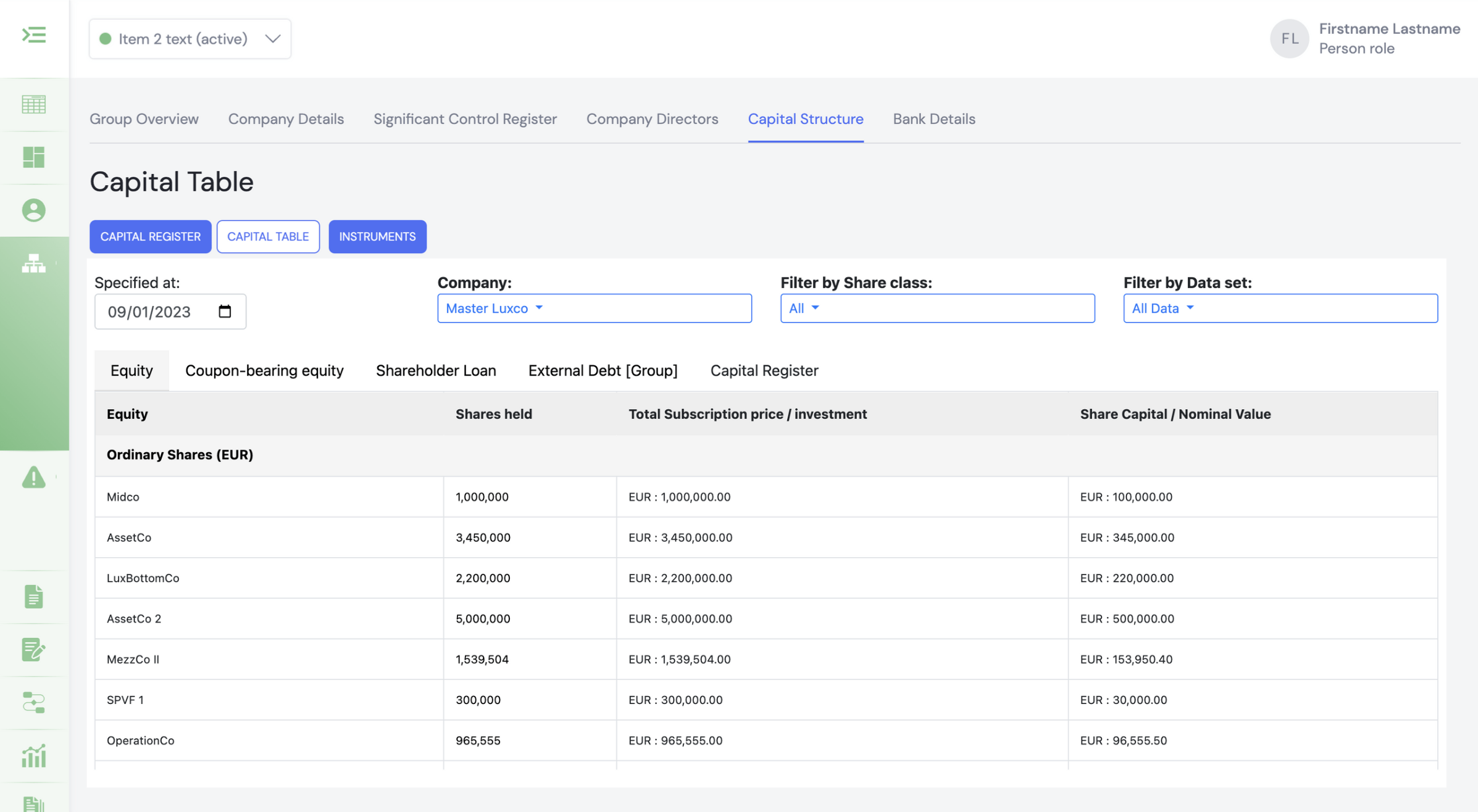Management incentives in European PE deals are typically structured as “sweet equity”. A standard European private equity portfolio capital structure consists of the following components:
- the private equity sponsor (and any rollover Management shareholders) invest into a strip of loan notes and/or preference shares with a fixed interest of 8% to 12% and common shares often referred to as “Strip”.
- in addition, a pool of common equity is carved out for the management team for “sweet equity”.
In such a structure, the common equity will have a low/nominal value and the bulk of the value is in the loan notes and preference shares.
By its very nature – multiple instruments, numerous holders, and constant changes over time due to leavers, joiners, issuances, buybacks, reorg etc – these structures are difficult to administer.
In addition, accurate data and documentation need to be maintained on: a) interest accruals on the loan notes and preference shares; b) legal documents for each capital structure event; c) up-to-date ownership registers; d) tax election filings to maintain the tax treatment of the sweet equity; and, e) cap table data for GP’ portfolio valuation.
At DealsPlus we know this pain and the risks of getting things wrong. That’s why we have built an end-to-end solution to simplify private equity cap table management for both Portfolio teams and GPs.
In this table, we summarise the management of private equity portfolio cap tables before and after DealsPlus.
| Before DealsPlus | After DealsPlus | |
| Cap table tracking | Users must undertake multiple fragmented activities to manage private equity cap tables. Time, cost and error rates are high. | Users just log cap table events once in DealsPlus and it does the rest. Users benefit from reduced time and cost, and increased accuracy. |
| Share registers | Users must maintain share registers for legal ownership purposes. These only capture movement in equity instruments and are not fit for use cases other than to meet the company law requirement. | DealsPlus auto generates the share registers from its central capital register database that captures all instruments – debt & equity. |
| Portfolio valuations | Users must maintain an excel spreadsheet for portfolio valuation purposes that captures both debt and equity instruments, including interest schedules. These are cumbersome to maintain, particularly as cap tables change during the holding period. They can often go wrong and end up being costly. | DealsPlus auto generates your commercial cap tables required for portfolio valuations. It can show you the cap table position for any date (past or present) and with accrued interest on debt and equity instruments. Further, the new feature to be released soon allows users to embed portfolio waterfall models within DealsPlus, making valuations seamless. Value each instrument by holder for any date. |
| Legal document generation | Users must generate and maintain the legal documents that gave effect to the capital structure separately. There exists a risk of legal documents not matching the registers or commercial cap tables. | Legal documents can be generated with information in DealsPlus, and tagged with each capital register entry, making a future review straightforward. DealsPlus acts as your ‘single source of truth’ across capital structure logs and underlying documents. |
Structure charts | Group structure charts must be manually updated for changes to legal entities and ownerships percentage as cap tables change. | DealsPlus automatically generates and updates the group structure chart as ownerships change. Moreover, DealsPlus’ group structure charts are interactive, allowing easy access to underlying information. |
| Multi-layer cap tables | Private equity portfolio structures have multiple legal entities. Further, it is possible that external investors are invested at different levels. It is difficult to capture the cap tables across multiple legal entity levels. | DealsPlus maintains your capital structure across all entities in a group. |
| The result | Portfolios were not ‘transaction ready’ | Portfolios are ‘transaction ready’ |
